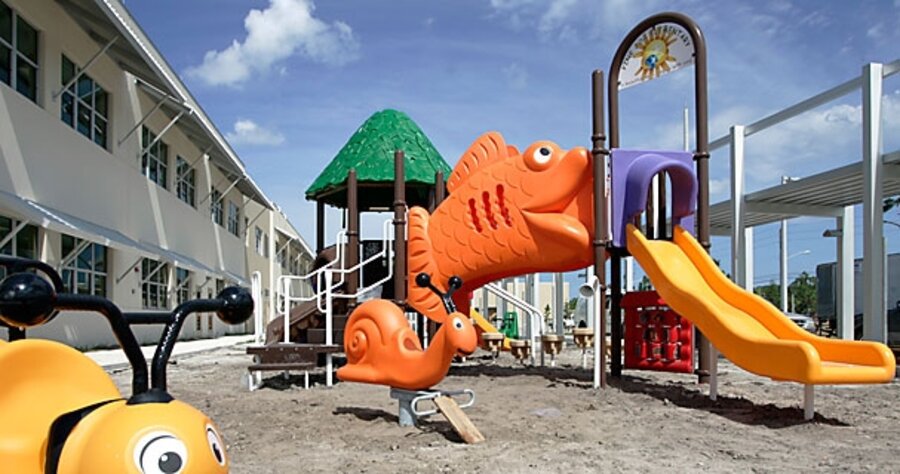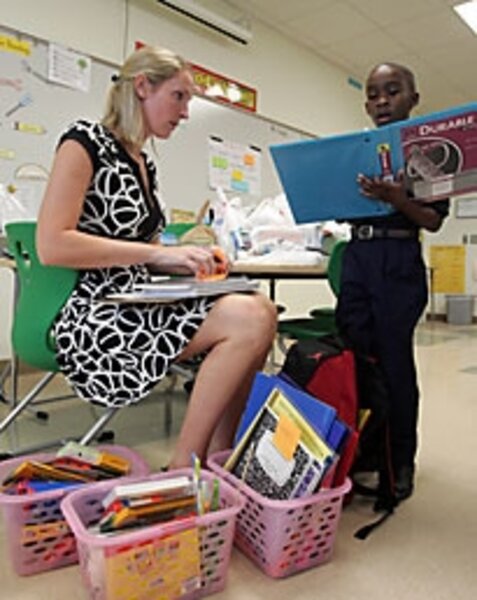Eco High: How can I ‘green’ my school?
Loading...
Q: I want to persuade my high school to go green. What would it cost for a school to switch to all recycled paper products and all energy-efficient lighting?
– Danel Berman, via e-mail
A: Greening your school is a great idea. It will not only benefit the environment, but the student body as well. According to the “Greening America’s Schools” report, sponsored in part by the nonprofit US Green Building Council, green buildings provide a better study and learning environment for students. Improved lighting, air quality, and acoustics are estimated to improve learning abilities and test scores by as much as 5 percent. And what better way to teach young people about environmental stewardship than starting right in the schools where they spend the majority of every weekday?
Since every school is different, there is no universal formula for calculating how much it will cost to go green. Switching to recycled paper, for instance, will not necessarily be cheap. A recent spot-check at a national office supply chain showed that the price for a ream (500 sheets) of 30 percent recycled copy paper cost 20 percent more than a ream with no recycled content. If you chose 100 percent recycled content, you’d pay 35 percent more per ream. But prices vary widely depending upon where you buy paper, and bulk purchasers like schools may be able to negotiate much better prices.
The best way to offset the added costs of switching to recycled paper is to cut paper usage at the same time. Start a program to educate students about how they can reduce paper waste by printing on both sides of a sheet and by not printing as many drafts, for example. You can also encourage your school to switch to e-newsletters instead of paper ones and find other ways to reduce administrative paper use.
Switching to recycled paper is definitely a big win for the environment. The Natural Resources Defense Council reports that 40 cases of 30 percent recycled copy paper (400 reams) will save more than seven trees, 2,100 gallons of water, and 1,230 kilowatt-hours of electricity, while emitting 18 fewer pounds of air pollution.
You can calculate this impact for your school. Ask your school purchaser how much printer and copier paper is purchased, and calculate its weight in pounds or tons. Then go to the Environmental Defense Fund’s online Paper Calculator. Enter the weight and type of paper you use, and you can determine the amount of wood, energy, water, solid waste, and greenhouse-gas emissions you’ll save by switching to recycled.
As for lighting, many schools already use a lot of fluorescent lighting. If your school still uses incandescent bulbs, consider that for every 60-watt incandescent bulb switched to a 13-watt compact fluorescent, the school could save 75 percent in energy use – an average of $45 over the life of each bulb.
Ambitious schools can also put in occupancy sensors that turn lights off when rooms are vacant, or install task lighting to further reduce energy usage. Such add-ons might seem like luxuries for already strapped schools, but it may still be worthwhile, given the energy that can be saved and the lessons learned.
Got an environmental question? Write: EarthTalk, c/o E – The Environmental Magazine, Box 5098, Westport, CT 06881. Or e-mail: earthtalk@emagazine.com.






